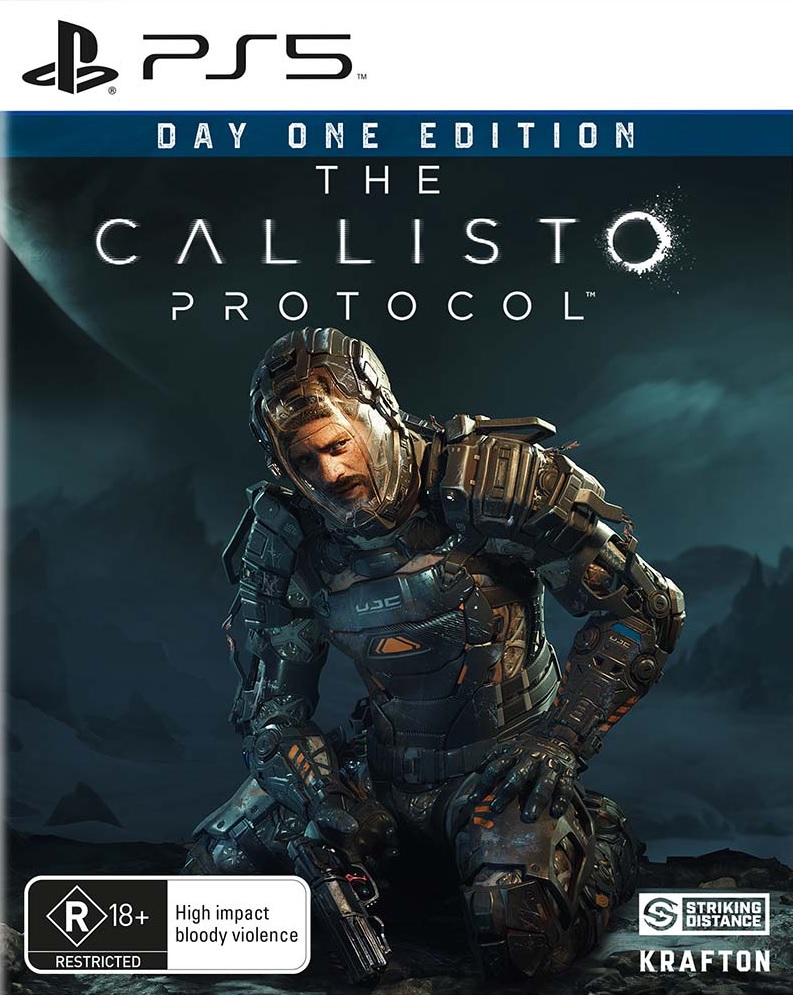The Callisto Protocol
Developer: Striking Distance Studios
Publisher: Krafton
Platforms: PlayStation 4, PlayStation 5 (Reviewed), Xbox Series X/S, Xbox One, PC
Release Date: Available Now
Price: $69.99 USD – Available Here $99.95 AUD – Available Here
Overview
With a brand new studio to work with, the possibilities for what Glen Schofield could create were endless but when you take the director of the original Dead Space and give him plenty of freedom, what better way to make a fresh splash than to stick with what you know, sci-fi horror with plenty of blood and guts in space. This brings us to The Callisto Protocol, the first release from Striking Distance Studios. With The Callisto Protocol offering a fresh new experience with excruciating attention to graphical detail, is this new take worth your time or merely a retread of Schofield’s original sci-fi horror?
Story
Nearly three hundred years in the future, Jacob Lee is transporting a fresh set of cargo from the “United Jupiter Company ” on Jupiter’s moon Callisto when his ship is boarded and forced to crash land back on the frozen moon. Despite the fact that the crash was entirely out of control and the only other survivor happens to be the one that forced them to crashland, Jacob finds himself wrongfully imprisoned as an inmate at the Black Iron Prison that serves as the only functioning structure on Callisto.
After having a CORE implant brutally installed on the back of his neck, Jacob awakens from his stupor only to find that something has gone incredibly wrong in the prison. Not only have fires broken out everywhere with malfunctioning security robots and bodies scattered around, nearly everything that is still moving is now a twisted biophage monstrosity out for blood. Escaping from his cell and teaming up with a fellow prisoner, Jacob must do whatever he can to survive the twisted mutations that have overrun the facility.
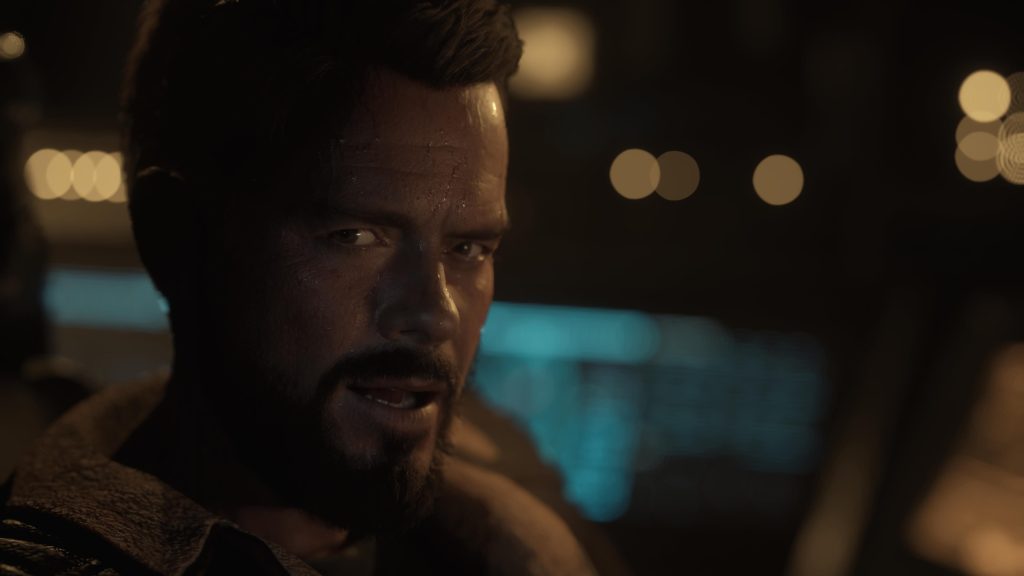
The Callisto Protocol is light on story and even worldbuilding as players will spend most of their time barely interacting with characters before something goes wrong and they are quickly ushered off to the next location. In fact, many moments that see Jacob potentially spending time talking with a character are interrupted by him simply falling into a pit requiring the player to then travel, once again, to the next area for a brief interaction until the last section of the game. Jacob himself is a mostly blank slate despite a solid performance by his voice actor and he does have some trauma that makes infrequent appearances though the writers do try to add some form of actual development in the last hour of the game. These developments do give Jacob some extra personality as well as reveal various motivations about what is happening but these happen far too late to change much.
This is something of a significant issue with The Callisto Protocol’s story development as the entire game provides only the minimal level of detail about what is happening in Black Gate before rushing through with a plot dump right at the end of the game that attempts to explain not only everything that has happened but also expand the game’s world at the same time. This issue isn’t helped by the fact that, even when finding every audio log available, the collectibles provide barely only a bit of context outside of a few significant recordings. These recordings can only be listened to while stuck in the menu screen rather than playing automatically when acquired or allowing players to walk while they play which is an odd decision since on the PlayStation 5 the audio plays through the DualSense controller’s speakers.
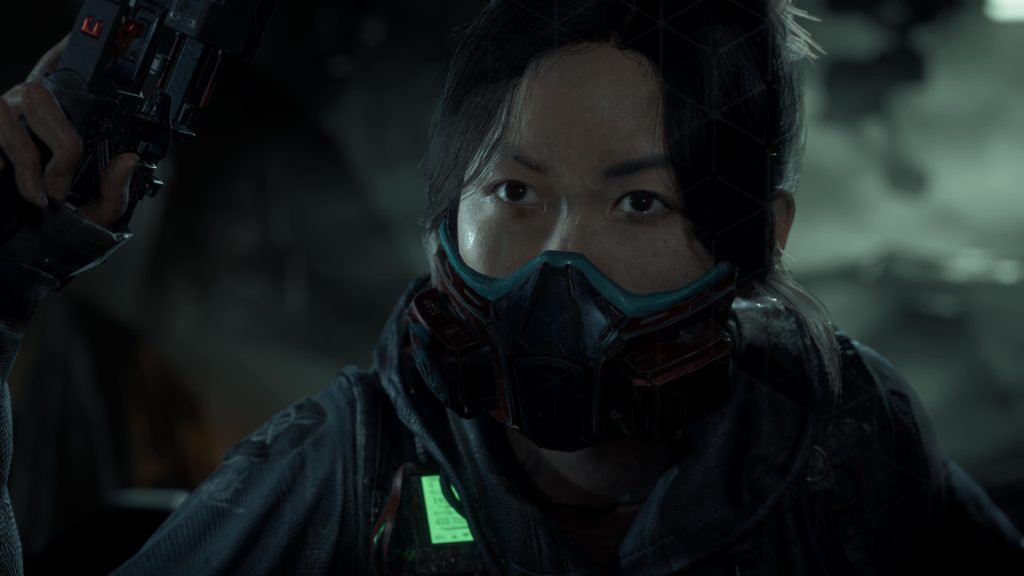
What storyline is provided in The Callisto Protocol, including the final developments, happen to be fairly predictable and the game even ends on a note that is just leading right into the already planned DLC or, hopefully, more fleshed out writing in a sequel. It is also worth noting that, while horror can be subjective, The Callisto Protocol is simply not scary. The development team has done their best to create eerie halls and environments for players to travel through but the gloriously grotesque appearances of the biophages fall on the side of simply being gross and not scary while the poor attempts at jump scares are not frightening in the slightest with there being almost no build-up to actual horror or even tension, which is a disappointment considering what fans have come to expect from Glen Schofield’s history.
Gameplay
In many ways The Callisto Protocol will feel incredibly similar to fans of the Dead Space games as it utilizes a number of elements found in the game. This includes the use of a small health bar displayed on the back of Jacob’s neck alongside a battery indicator for his telekinetic GRP device, the ability to stomp downed enemies and crates to obtain money, ammo, and health, and of course the aforementioned telekinesis ability that has seen significant improvements. The major difference here however is that rather than focusing entirely on firearms, The Callisto Protocol leans heavily into melee combat instead for nearly every enemy type.
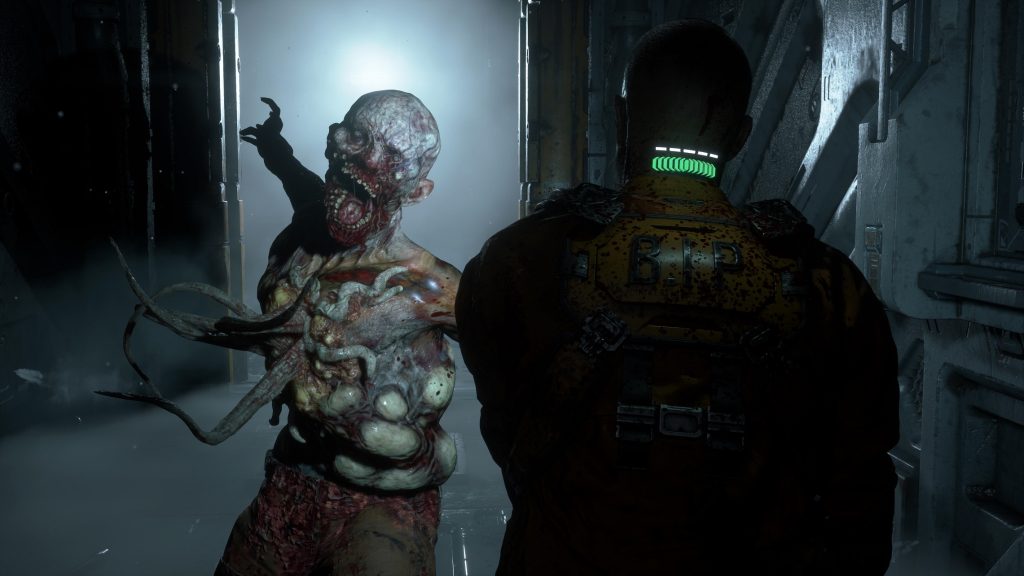
While players will obtain two different pistols, a mini-shotgun, full combat shotgun, and eventually even an assault rifle while progressing through the game the primary weapon for players will be Jacob’s stun baton. Every enemy in the game, outside of one type that can spit long range acid and an explosive type, will rush at Jacob and players must sway out of the way of their attacks and follow their dodges up with a combo attack of their own. Initially it may be difficult to get used to this combat style as dodging isn’t as intuitive as one would hope but once players get the hang of it, the game rewards an aggressive playstyle by making sure to keep the pressure on the monstrous biophages that appear before Jacob. As such, it is a little hard to be afraid of something by the third time the player has charged at an enemy to take them down. To add some extra offense players can bring their currently equipped gun up for a quick trick shot at the end of a light or heavy combo attack. This may not feel necessary early on but becomes vital later on once more enemies begin to swarm the player, especially once enemies begin to “mutate” into stronger forms once they are near death and a proper gunshot will put a stop to them.
The higher focus on melee combat gives The Callisto Protocol a unique feel and comes off as one of the game’s greatest strengths but also begins to fall apart later in the game while also preventing the game from actually feeling scary. While fighting biophages can feel incredibly weighty with satisfying swings crushing through bone and slicing off limbs, especially once the stun baton is given a few upgrades, the fact that players will almost always be running at an enemy to take them down or squaring up with a foe means that there is no chance to actually scare players and even cheap jumpscares are quickly met with a electrified baton edge and dispatched just as quickly. In fact, the game introduces a number of stealth areas where Jacob can sneak around blind enemies, dispatching them with stealth kills if players choose. Oddly enough, these “stealth” kills happen to be loud and brutal to the point that it is a surprise they don’t actually alert these blind enemies while walking too fast will.
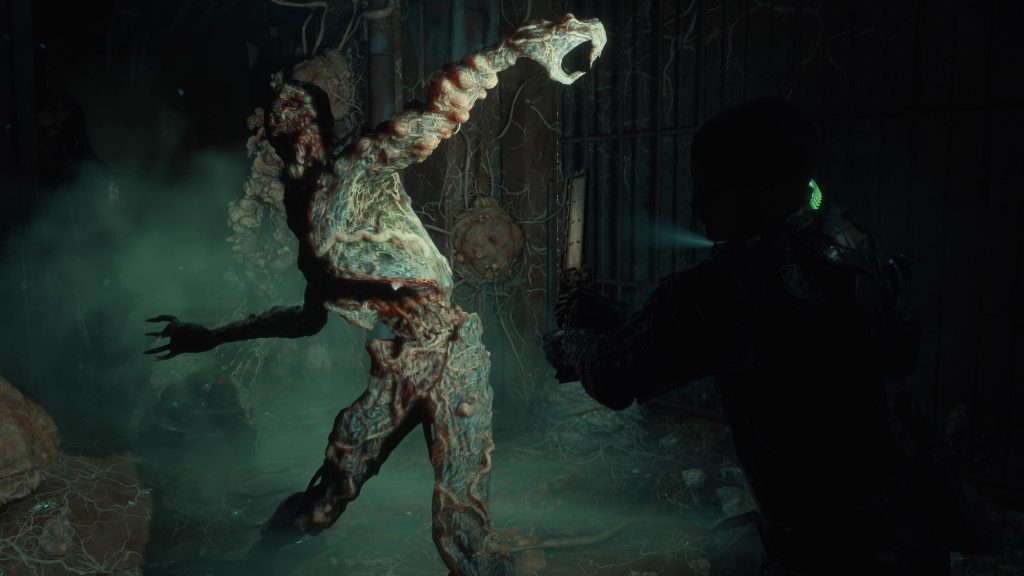
As for the latter half of the game, The Callisto Protocol often raises difficulty simply by throwing more biophages at Jacob and while many times multiple enemies will simply wait around for their chance to attack, they can also take quick swipes, explode, grab Jacob, or shoot acid and, even with the game’s helpful assist features turned on to make combat a bit easier, the game’s dodge mechanics simply fail to work properly. Along these same lines, while players are meant to always be able to dodge an enemy’s first strike if they are pushing the analog stick correctly, the system sometimes does not work and when this happens multiple times against the game’s bosses this simply becomes frustrating rather than enjoyable.
Speaking of bosses, The Callisto Protocol only features two actual bosses of any kind. The first is a mini-boss that players will fight multiple times in different arenas, capable of killing the player in one or two blows and restarting the fight over from scratch while the final boss of the game is a bit more detailed and gives players more of a chance, it also deals plenty of damage in a single blow. This results in less of a “survival horror” feeling to gameplay and more of a gamble hoping the game’s dodge will work properly or simply running to keep distance from these bosses. It is also worth noting that while the game’s guns are meant primarily as back-up weapons in The Callisto Protocol, these boss fights rely almost entirely on using firearms to deal damage using either the GRP to throw explosives with melee taking a complete backseat.
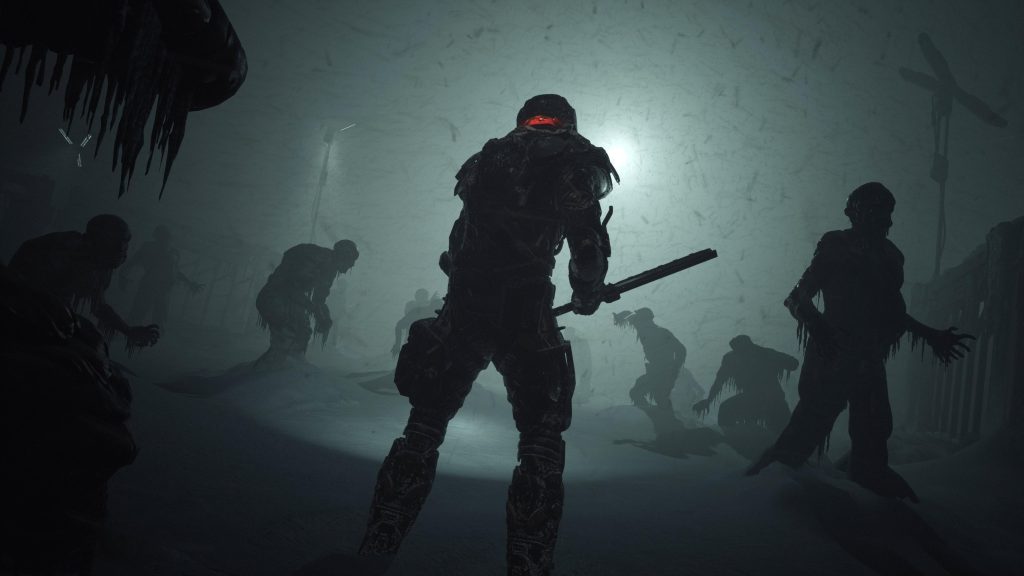
Outside of using the game’s meaty melee combat and simple guns that have an incredibly slow “quick-swap” system, the GRP system will often give players quite an advantage in most standard fights. Rather than simply being able to throw items around an area, the GRP now can grab a living enemy and throw them around the area. This can be used to simply grab an enemy and drag them over, leaving them wide open for a brutal melee combo but it is best used to throw enemies into the many stage hazards that are scattered around most areas. These range from spikes to impale them on, spinning blades or grinders to turn them into pulp, and simply pits that erase them from existence. This makes the GRP an extremely useful tool and while it does require a recharge or use of a battery players can once again upgrade it in various ways to make it far more reliable.
Unfortunately no matter how players improve their gear in The Callisto Protocol, there is currently no way to actually take that progress forward in a New Game+. Currently it has been announced that this mode will be added into the game sometime in the future but the lack of a New Game+ in a title where players can upgrade their weaponry is a big disappointment, especially given the game lacks any actual replayability as a result. This is due to the title featuring an incredibly linear level design with only a few small detours that may contain an item chest or a recording and little else. Along these same lines, there are zero puzzles of any kind in the game with the only collectibles being the aforementioned audio logs.
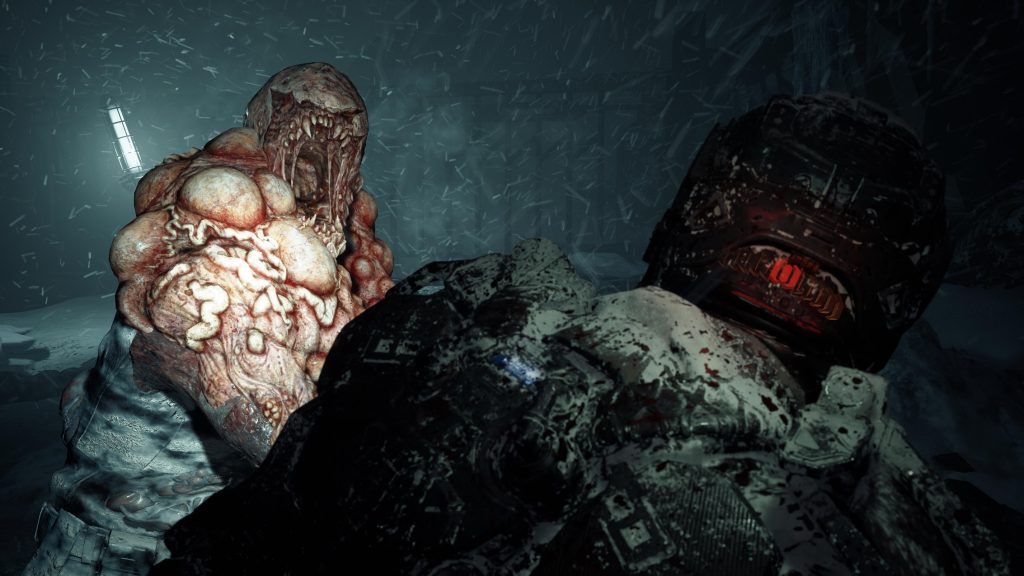
It is worth noting that while the PlayStation 5 handles The Callisto Protocol the best of all current platforms, it is not without its fair share of issues. These range from simple graphical bugs that see an enemy killing Jacob with an arm it no longer has or teleporting across the room while in the middle of an animation to more annoying issues. These tend to involve enemies that either end up getting stuck inside of the floor or wall and on multiple occasions. One type of enemy, a spider-like biophage, also had the tendency to phase through the walls and ceilings at times making them particularly difficult to target.
Visuals & Audio
It must be said that The Callisto Protocol is probably one of the best looking PlayStation 5 games around and easily pushes the console to the max when it comes to graphical performance. The character models are incredibly detailed with life-like facial scans for its main characters and constant reactions to the environment around them as well as great facial animations that perfectly portray the emotions the characters are feeling. Traveling through a sewer filled area will leave muck and slime on Jacob’s jumpsuit that will dissipate over time and traveling through the harsh weather can have snow build-up on his armor. Bloody fights can feature Jacob just coated head to toe with blood spatter and this doesn’t even touch upon the gruesome looking death animations. Jacob can die in a number of bloody ways, usually involving a few limbs being separated from his body and all of these are delightfully gory, though perhaps a few run on a little too long considering they are unskippable.
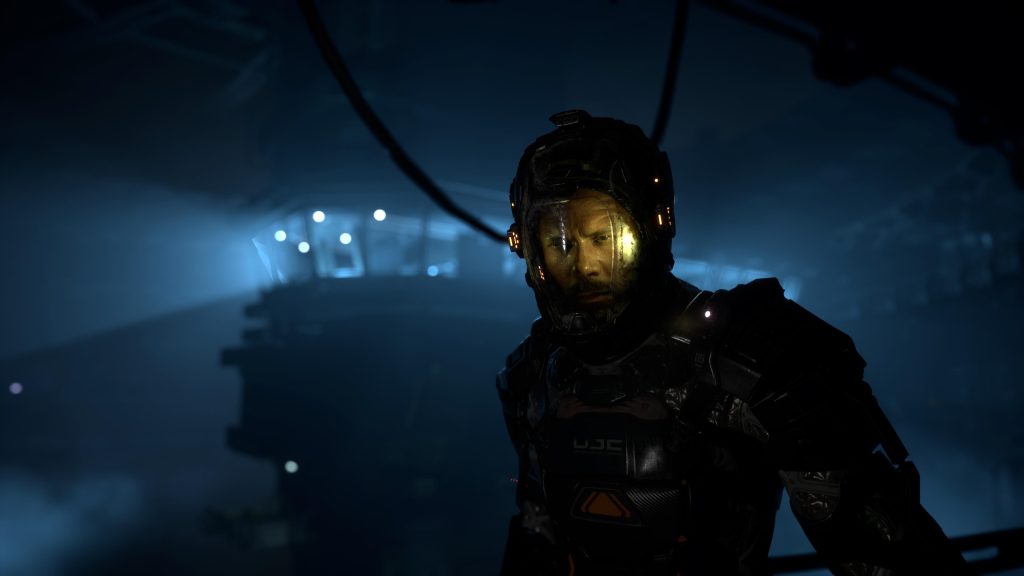
The performances by the voice cast in the game are handled quite well despite the simplistic nature of the plot that they have to work with. It is also nice to note that the game does feature some great sounding enemy snarls and growls as they emerge to attack. Along these same lines the company has done a nice job creating some great atmospheric sounds for most areas in the game, helping to create a somewhat creepy atmosphere from time to time, especially since the title makes great use of 3D audio to help convey where enemies may be coming from.
Overall
The Callisto Protocol is a ridiculously good looking game with some incredibly satisfying melee combat that, once players get the hang of it, flows quite well however it begins to fall apart in larger encounters and the title’s few boss battles. With a straightforward level design and no puzzles, the focus is on taking down the countless gruesome foes that attack Jacob and seeing just how brutally they can kill him but its simplistic and predictable storyline, lack of actual horror, and any kind of replayability make it one that has plenty of room for improvement as the ground work here is solid, but lacking in many regards.
Capsule Computers review guidelines can be found here.


